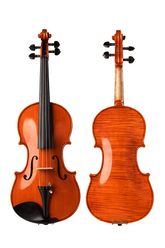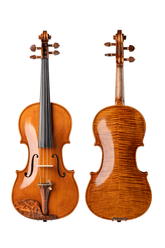Why Is Horse Tail Hair So Important for Violin?
In the world of violins, the bow often plays a starring role alongside the instrument itself. While the bow’s stick might catch the eye, the true magic lies in the strands of horse tail hair stretched across it.
Horse tail hair is not just useful; it is important. It directly impacts the tone, texture, and quality of sound.
This article explores why horse tail hair remains the material of choice for violin bows and how it impacts the art of playing.

The Anatomy of a Violin Bow
To understand the importance of horse tail hair, it’s essential to know how it fits into the structure of a violin bow. A bow consists of several parts: the stick, frog, screw, and the all-important hair. The bow features a horse tail hair that spans its length, and you can tighten or loosen it using the screw mechanism. This hair interacts with the violin strings, creating vibrations that produce sound.
The Source of Quality Horse Tail Hair
Premium horse tail hair used in violin bows often comes from colder regions, such as Mongolia, Siberia, and Canada. The extreme climates in these areas contribute to thicker, stronger, and more durable hair.
White horse tail hair is the most common type used for classical violin bows. Black horse tail hair is coarser and stronger. Some musicians prefer certain bass bows and special playing styles. Musicians sometimes use mixed hair to achieve unique tonal qualities.
Unique Properties of Horse Tail Hair
- Grip on Strings: Horse tail hair has a scaly surface. This helps it grip the strings well when coated with rosin. This grip is what enables the bow to produce sound by creating friction.
- Natural Elasticity: Horse tail hair’s elasticity ensures that it can withstand the tension required for playing while maintaining flexibility for nuanced bowing techniques.
- Sound Quality: Horse tail hair delivers a rich and organic sound that synthetic alternatives struggle to replicate. The natural fibers enhance resonance, giving musicians greater control over dynamics and tone.
Horse Tail Hair vs. Synthetic Alternatives
While synthetic bow hair has been developed, it’s rarely used by professional players. Synthetic hair often lacks the tactile feedback and tonal richness provided by horse tail hair. For those seeking authenticity in sound and playability, natural horse tail hair remains the gold standard.
Caring for Bow Hair
Proper maintenance is crucial for preserving the quality of bow hair:
- Apply Rosin Regularly: Rosin enhances the hair’s grip on the strings, ensuring consistent sound production.
- Avoid Moisture: Excess humidity can weaken the hair and diminish its performance.
- Replace When Needed: Over time, violin bow hair wears out and loses its ability to produce sound effectively. A professional rehairing every 6-12 months is recommended for regular players.
The Player’s Connection to Horse Tail Hair
The relationship between a musician and their bow is deeply personal. The choice of horse tail hair, tension settings, and rosin all contribute to a violinist’s unique sound. Many renowned violinists spend considerable time selecting the perfect bow, as even subtle differences in horse tail hair quality can significantly impact their performance.
Fun Facts and Innovations
- Historical Context: Horse tail hair has been used in violin bows since the Baroque period, showcasing its enduring value.
- Eco-Friendly Alternatives: Horse tail hair is a natural byproduct. However, research is ongoing for sustainable and ethical alternatives that keep the same quality.
Conclusion
Horse tail hair’s unparalleled ability to connect the bow to the violin strings makes it indispensable for musicians. Its unique properties—from natural grip to tonal richness—ensure that it remains a cornerstone of violin artistry. If you play the violin, whether you are skilled or just starting, learning about horse tail hair can enhance your understanding of this art.
Bow Hair For Violin or Viola
If you need to buy real natural horse tail hair, then you can click Bow Hair to view details.
Related articles recommended:





